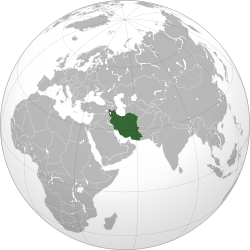Iran Doubled Number Of Underground Centrifuges, Says IAEA
By RFE RL
(RFE/RL) — The UN’s nuclear watchdog has issued a report saying Iran is preparing for possible major expansion of uranium enrichment in a fortified underground facility.
The International Atomic Energy Agency’s (IAEA) quarterly report also says “extensive activities” — a reference to suspected sanitization efforts — at Iran’s Parchin military complex will hamper its investigation of possible past nuclear weapons development work there, if inspectors are granted access.
The report says Iran has produced 189 kilograms of higher-grade enriched uranium since 2010 — up from 145 kilograms since May, when the previous quarterly report was issued.
The IAEA reported last year that Iran placed “a large explosives containment vessel” in Parchin in 2000 and constructed a building around it.

The facilities were designed to contain the detonation of up to 70 kilograms of high explosives — something the IAEA called “relevant to the development of an explosive nuclear device.”
Since that report, the IAEA has sought to send inspectors to the site of the suspected building but have been denied access by Iran to that part of the military base.
In recent months, the agency also has obtained information that indicates Iran has been busy cleaning up the suspected site, including tearing down some buildings and removing soil.
The last effort by the IAEA to convince Iran to let inspectors visit the site — where Iran denies clean-up activities are taking place — broke down in June when Tehran accused the agency of acting like an “intelligence organization.”
More Centrifuges At Fordo Site
The IAEA’s latest report also says the number of enrichment centrifuges at Fordo has more than doubled to 2,140 from 1,064 in May.
The Fordo facility is extremely controversial for two reasons.
First, it is dug into a mountain, making it difficult to bomb — suggesting it could have a military purpose.
Secondly, the centrifuges at the facility are being used to enrich uranium to purities of 20 percent — far higher than the 4 percent needed for fuel for commercial reactors.
Iran has said it is producing the 20 percent-enriched fuel for use in research reactors to produce medical isotopes.
But arms-control experts worry that creating large stockpiles of 20 percent-enriched uranium makes it much easier for Iran to later complete the jump to 90 percent-enriched uranium needed for nuclear bombs.
In what appears to be a sign of the IAEA’s growing concern over Iran’s nuclear activities, the agency this week revealed it was creating a special Iran “task force.”
The task force is to scrutinize Tehran’s nuclear program and its compliance with UN resolutions — including those demanding a suspension of uranium enrichment.
Iran has denied any interest in nuclear arms.
